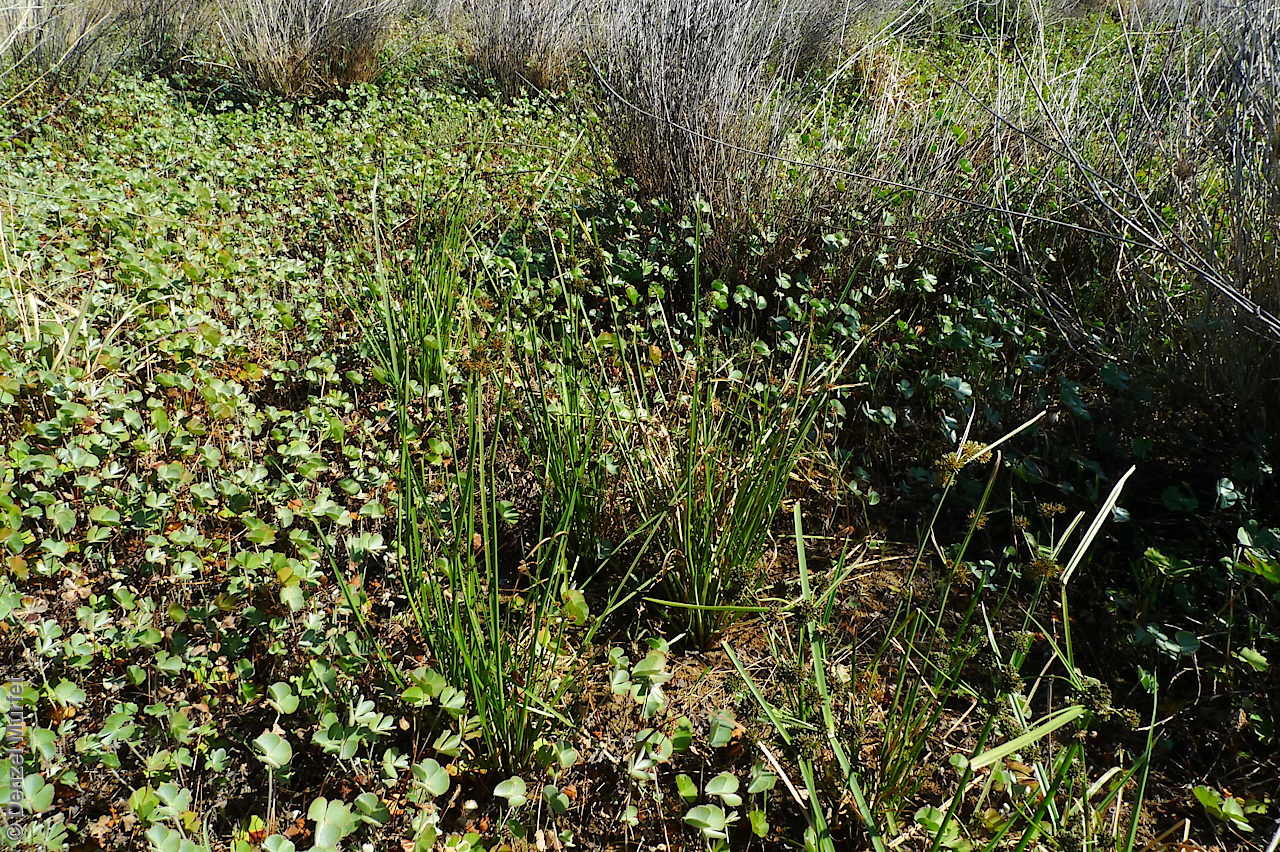
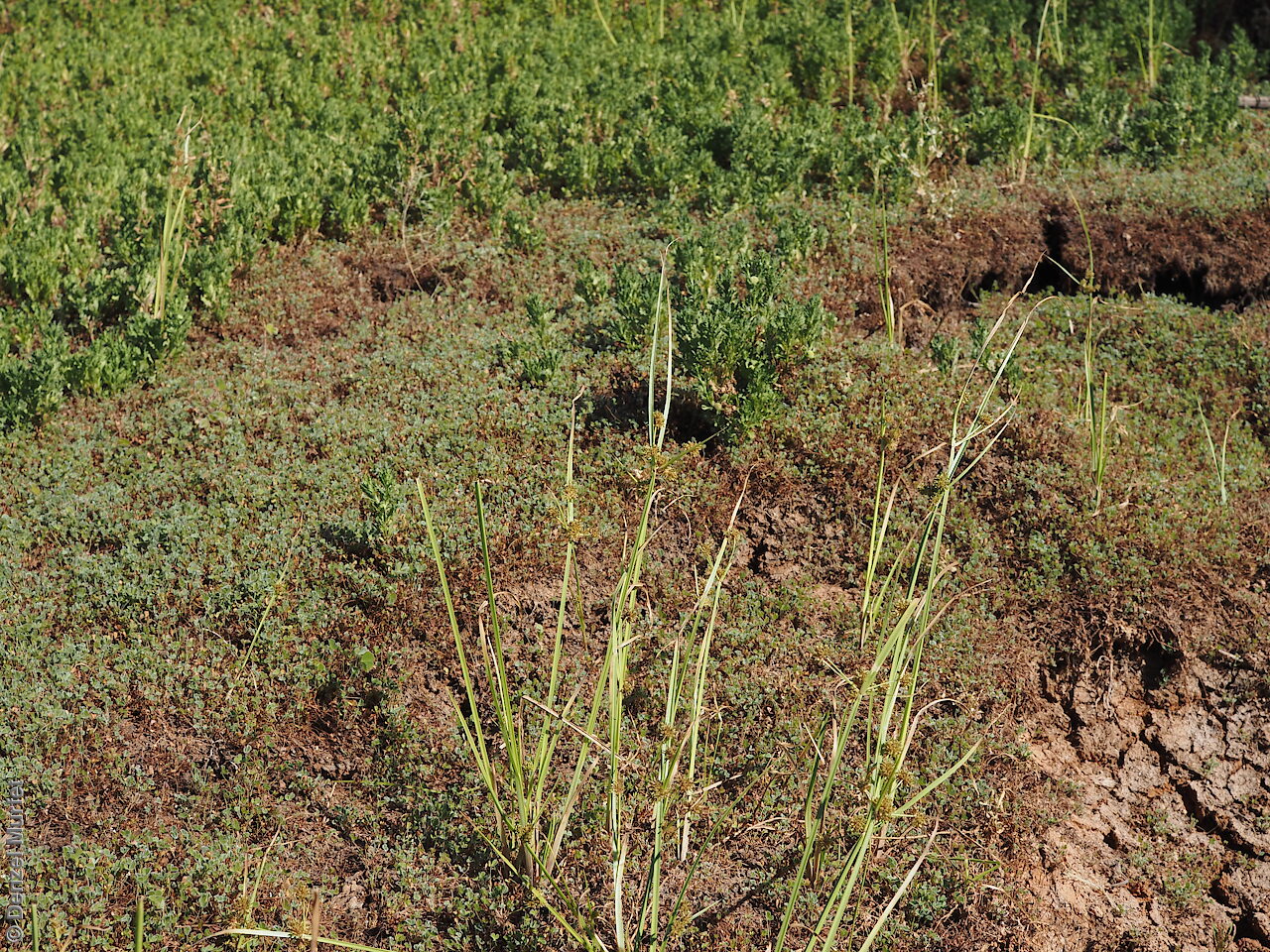
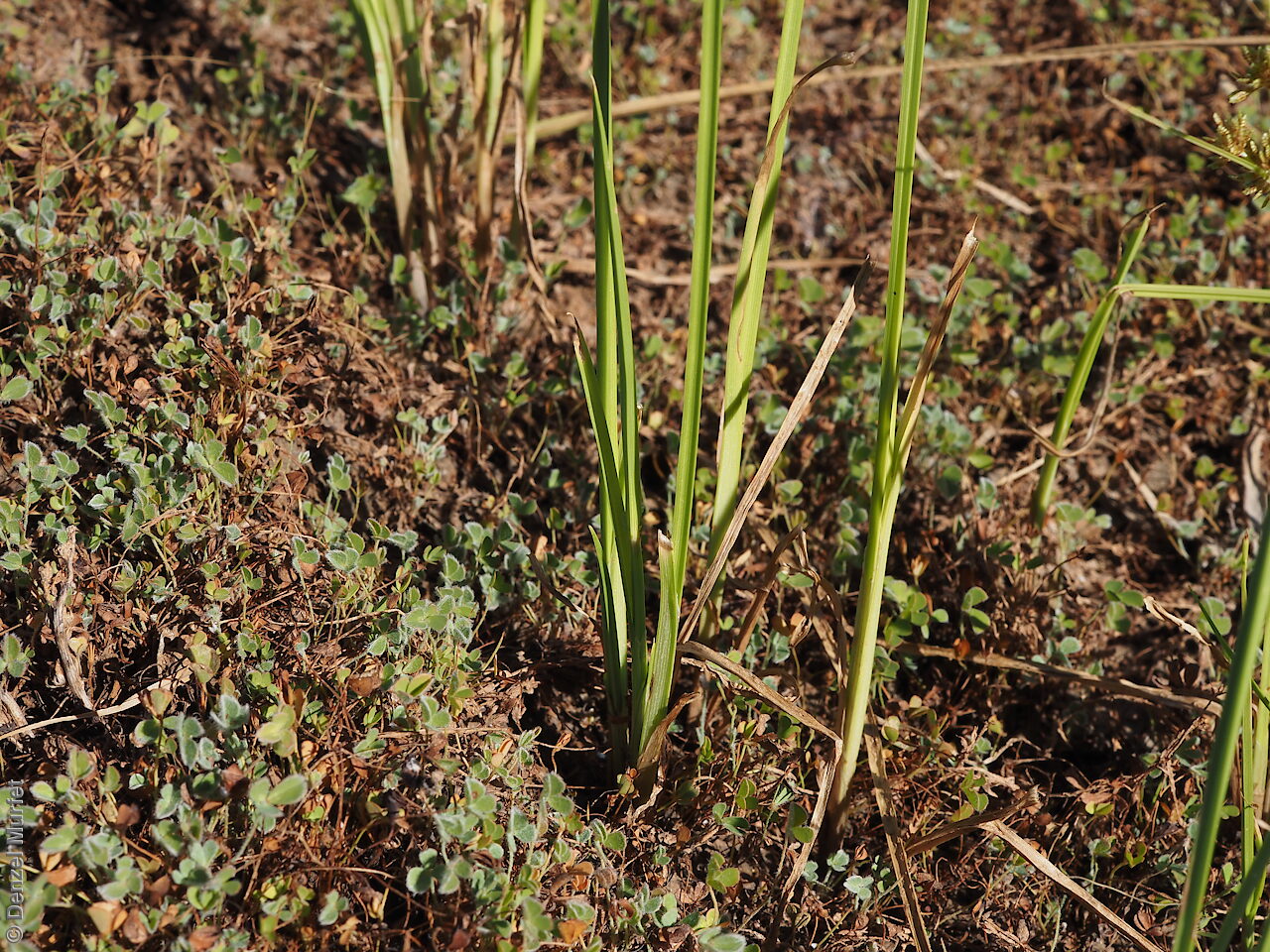
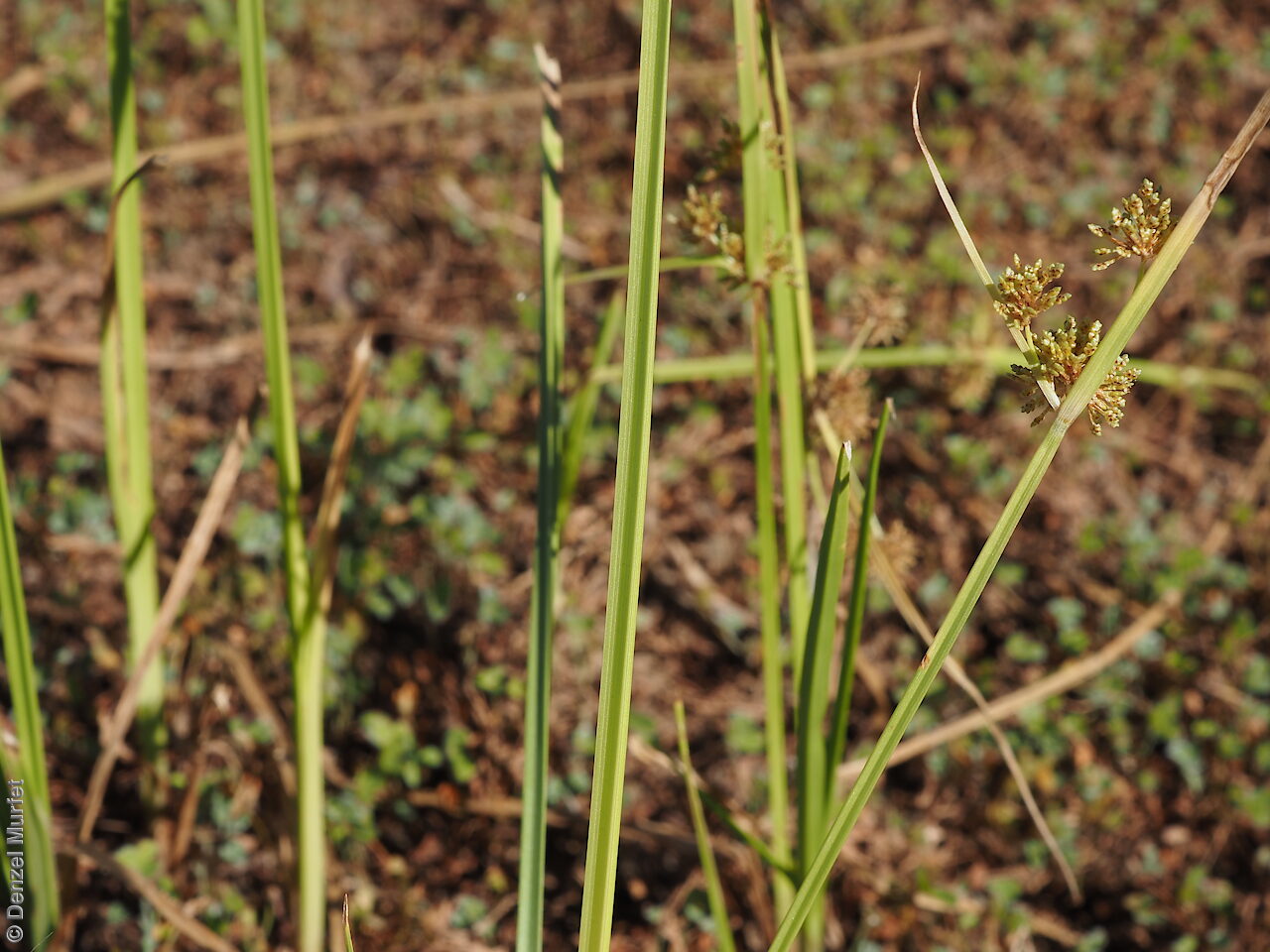
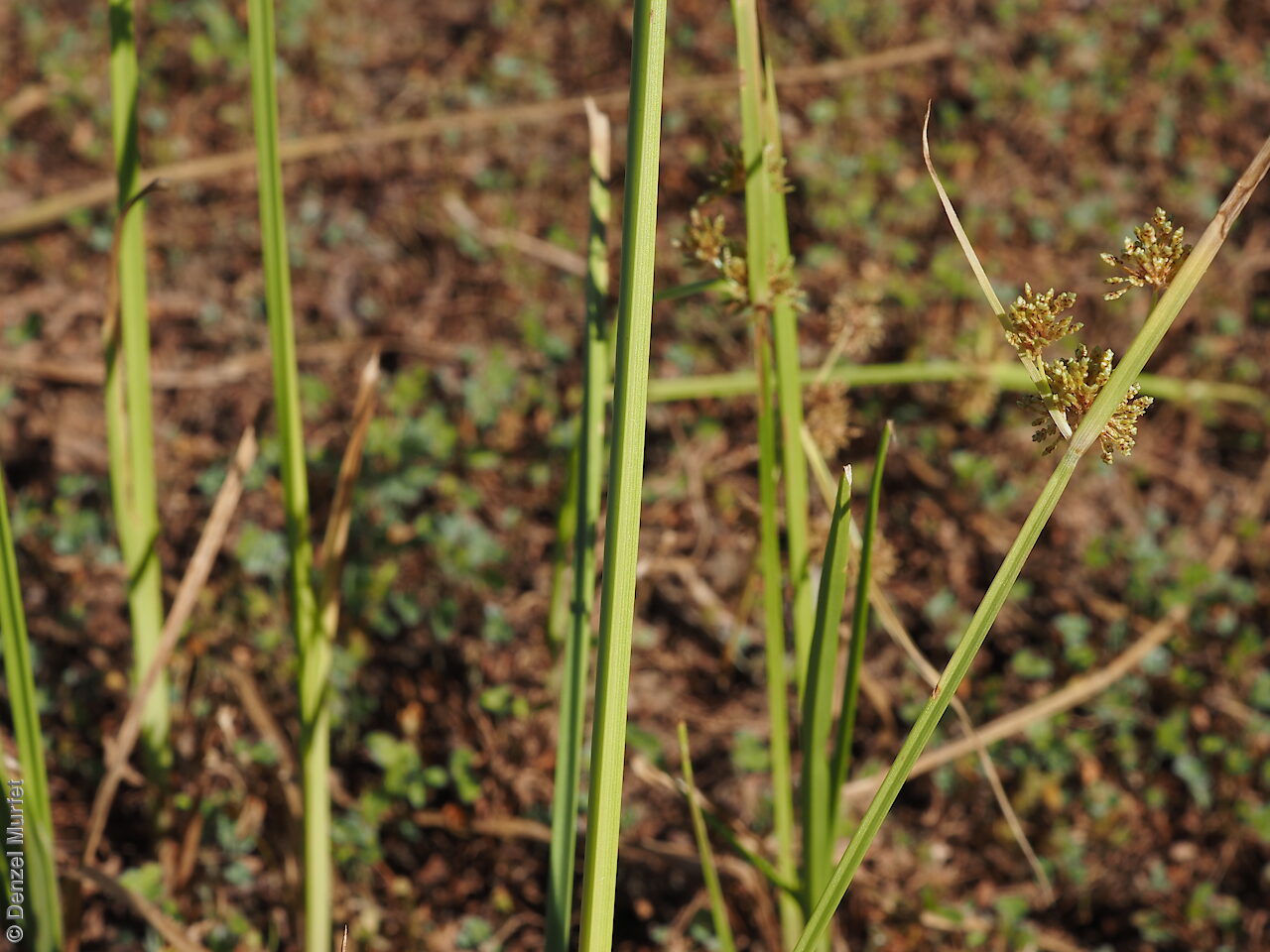
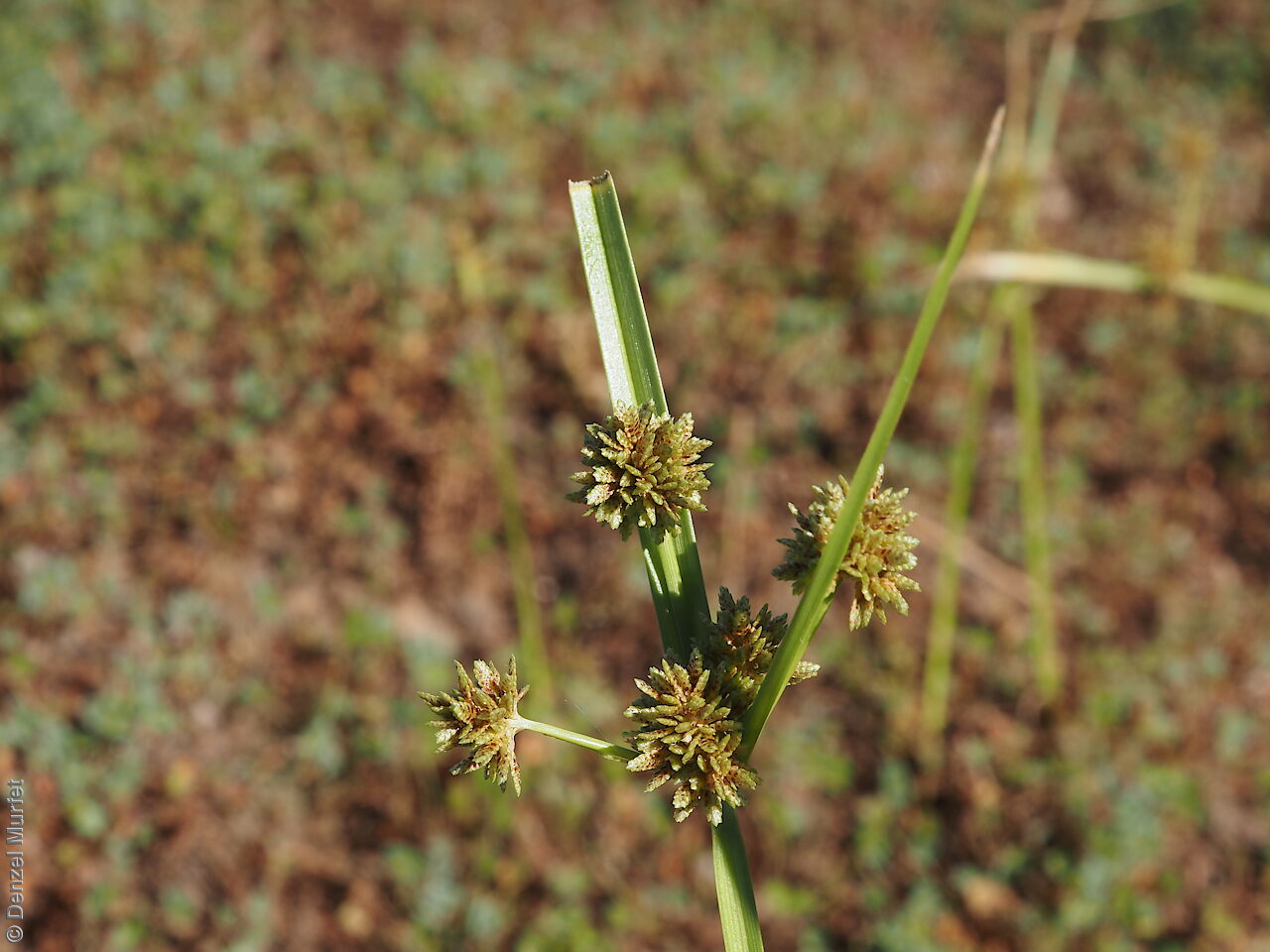
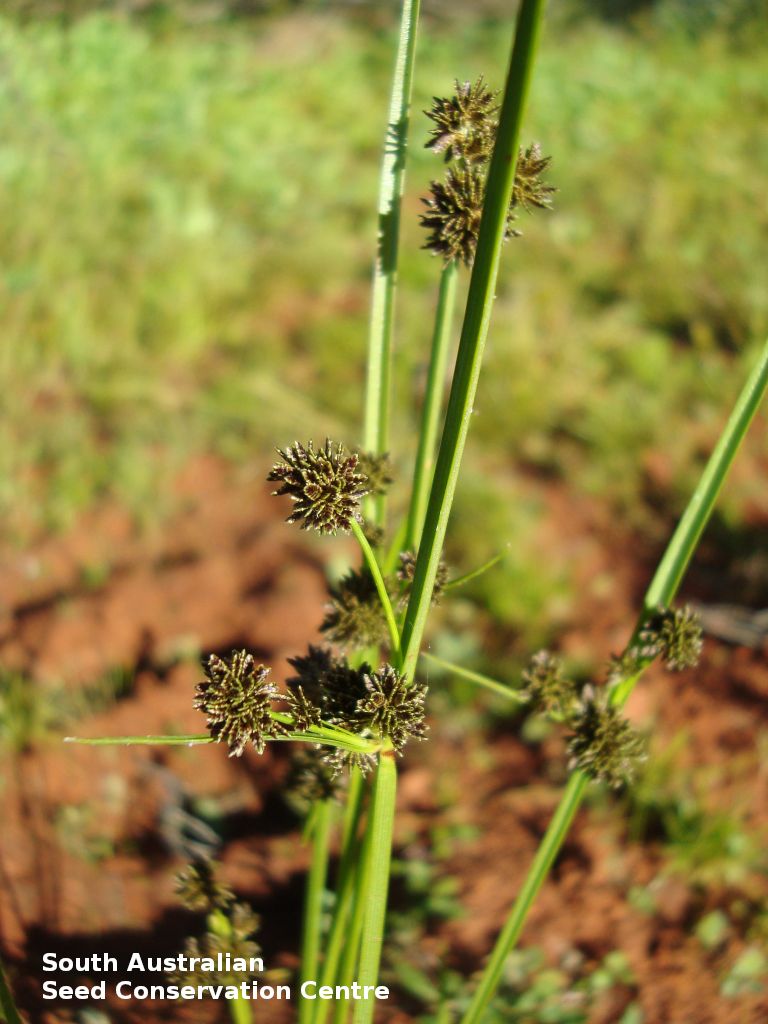
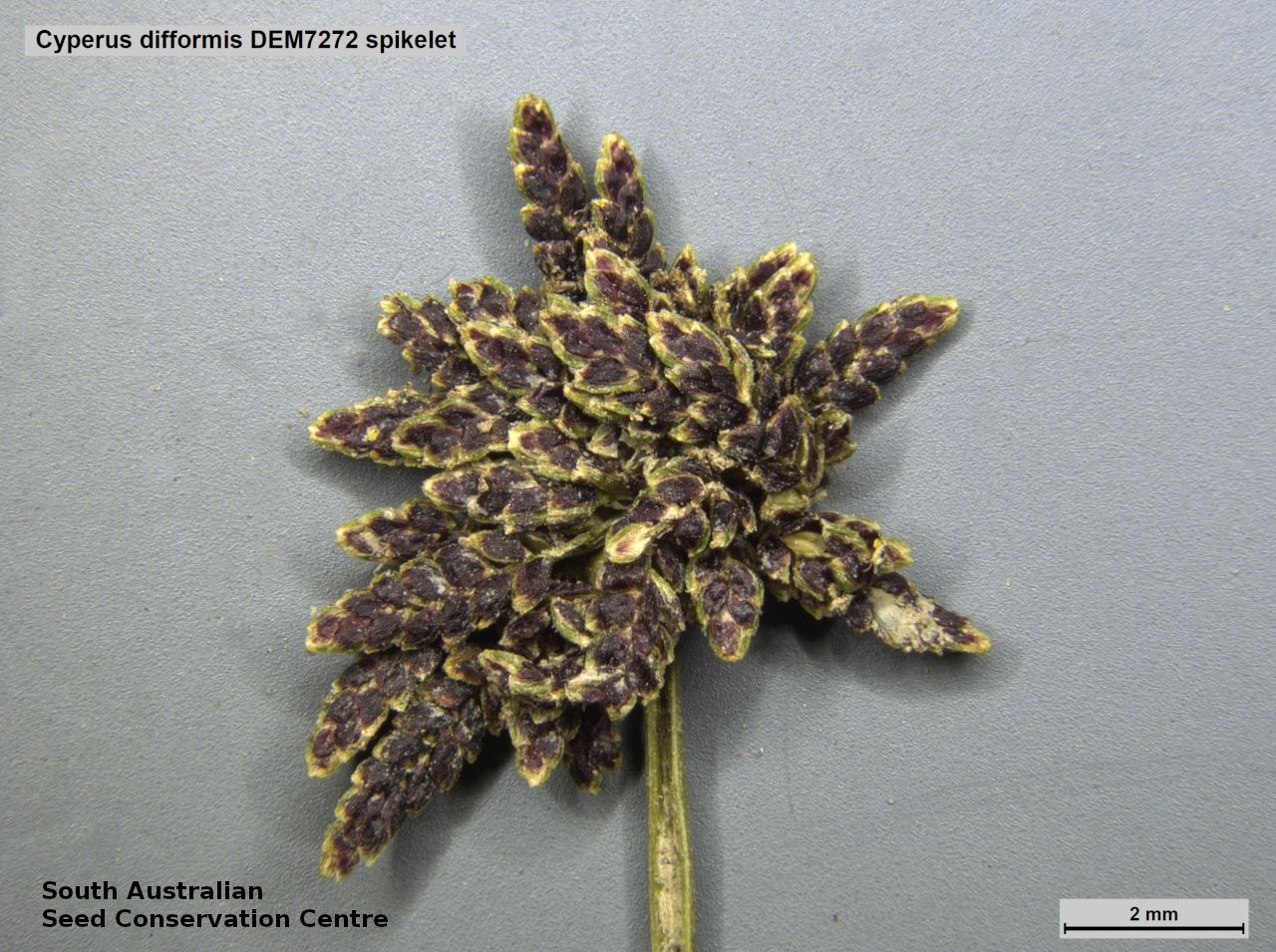
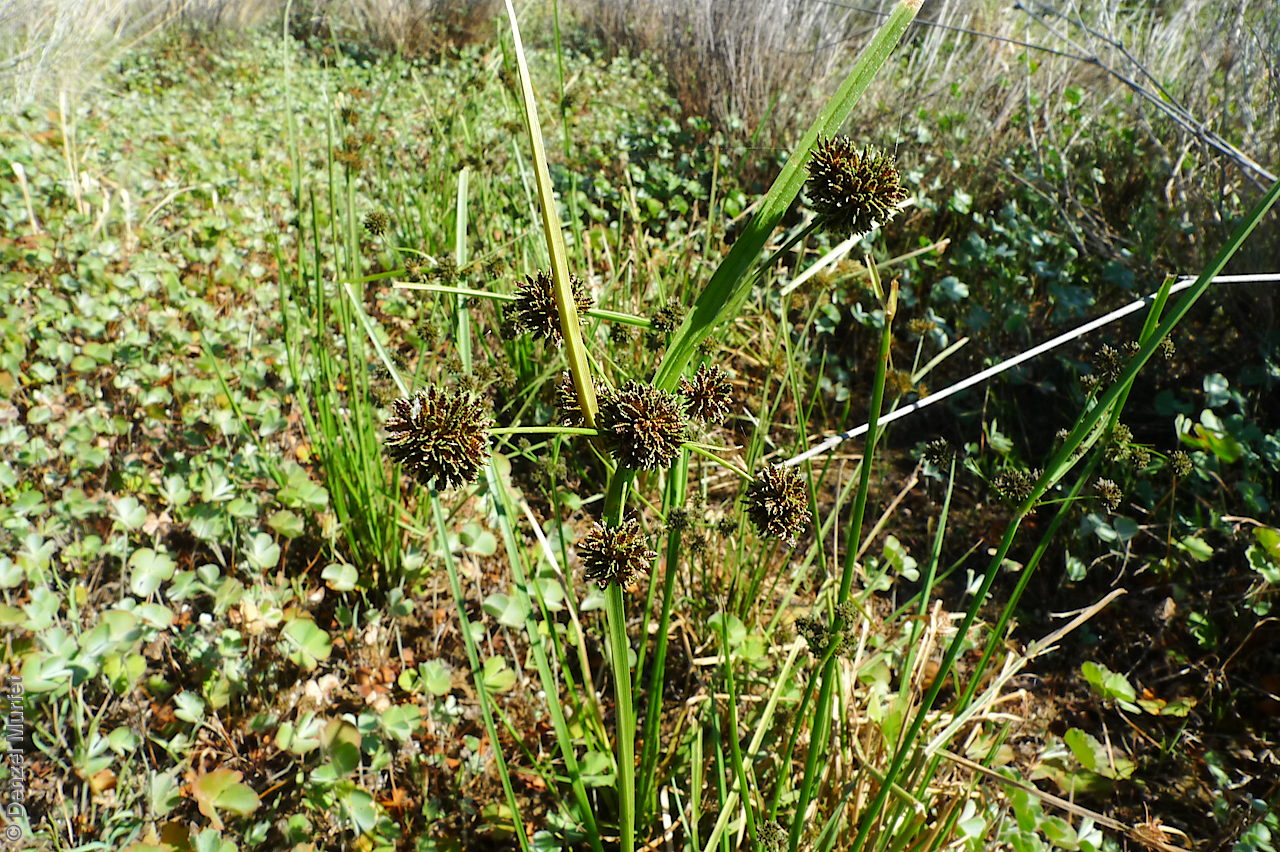
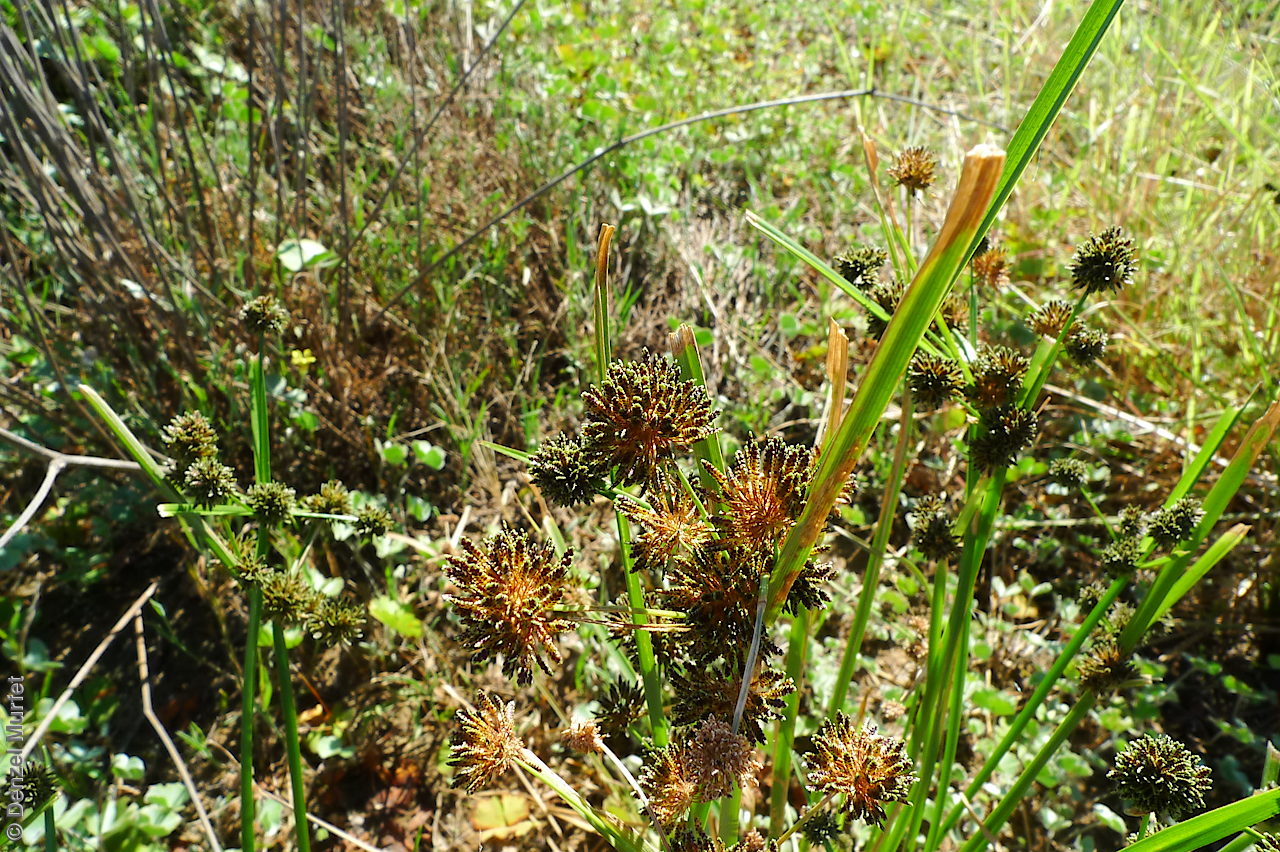
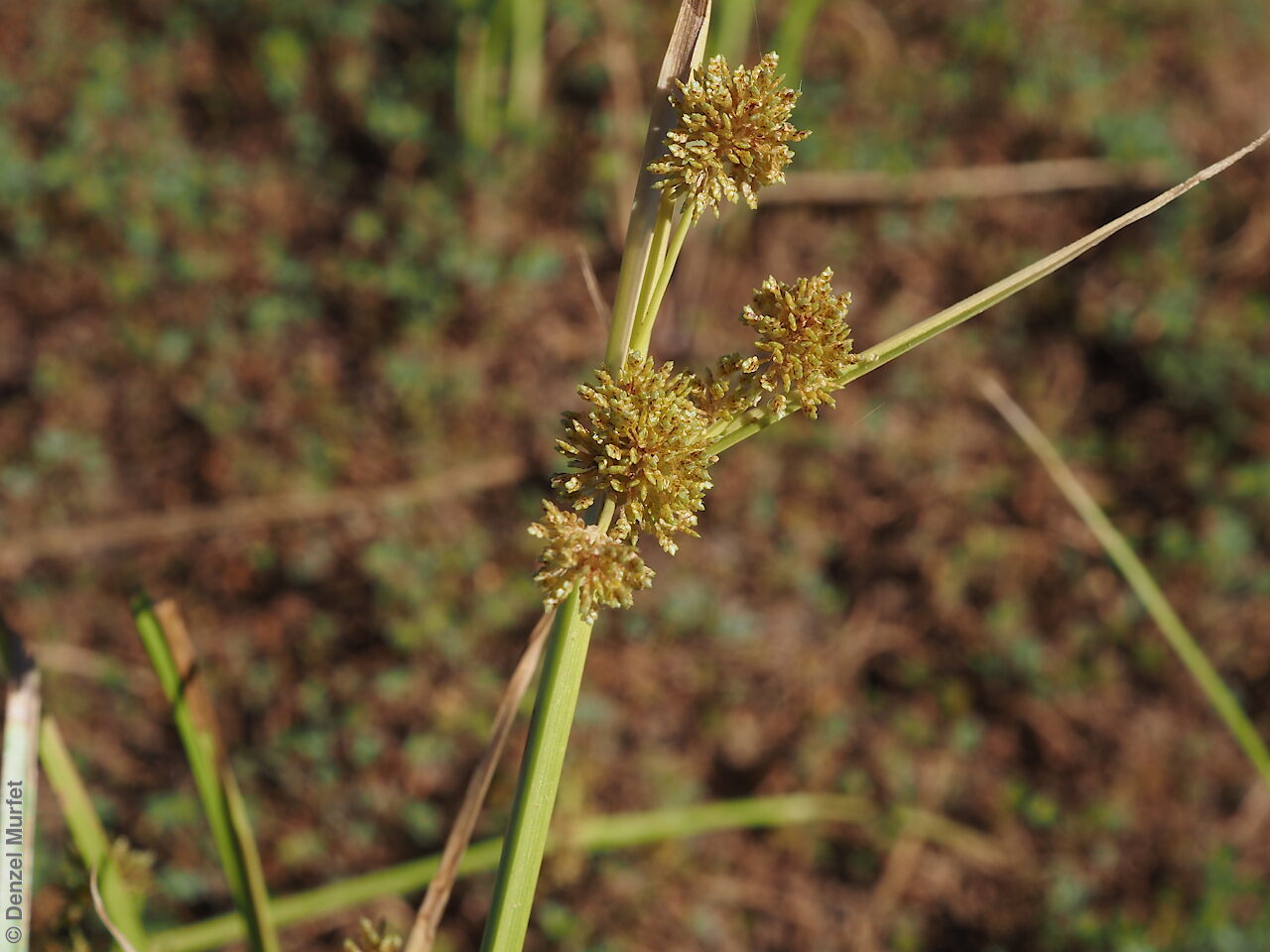
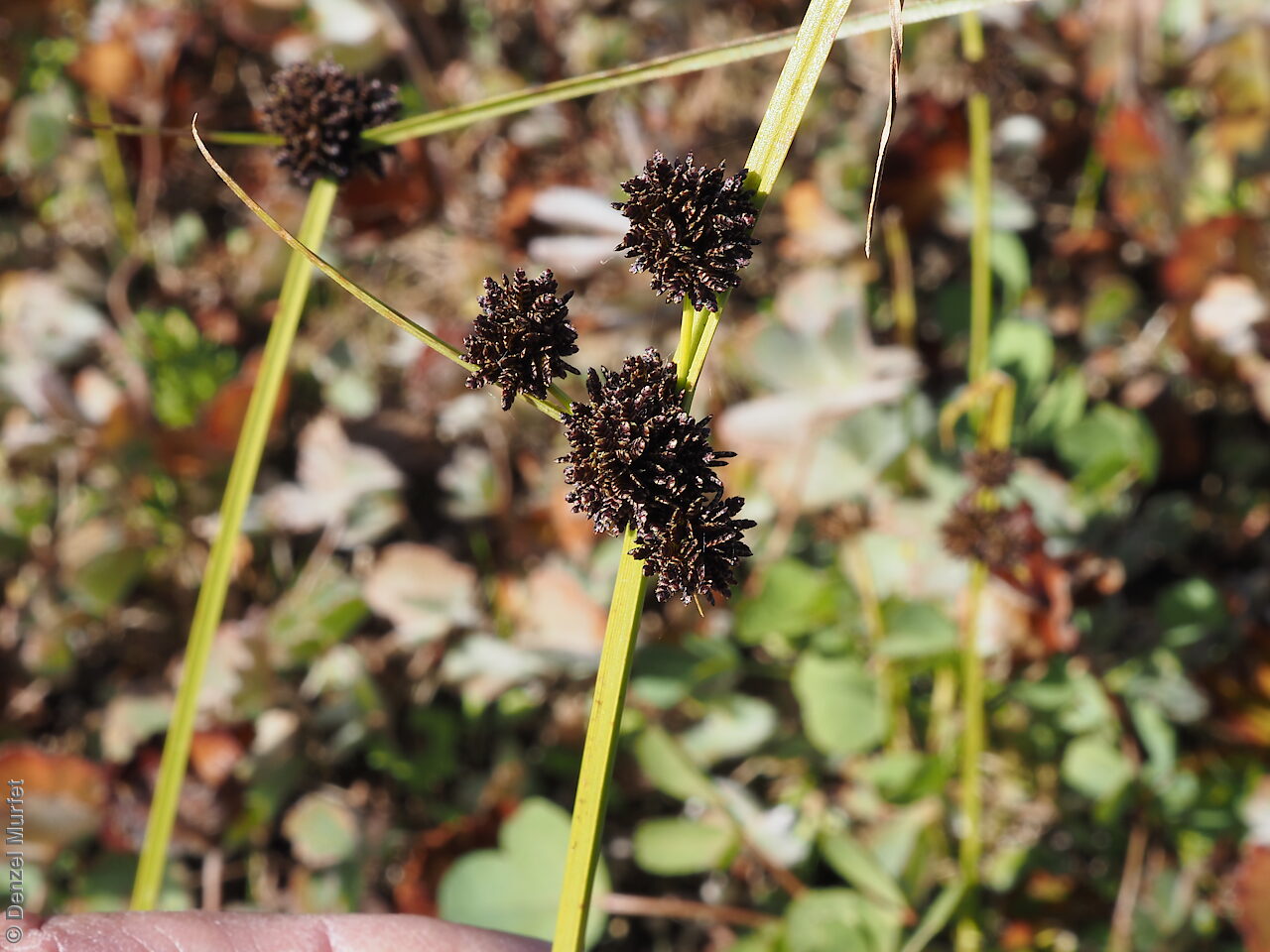
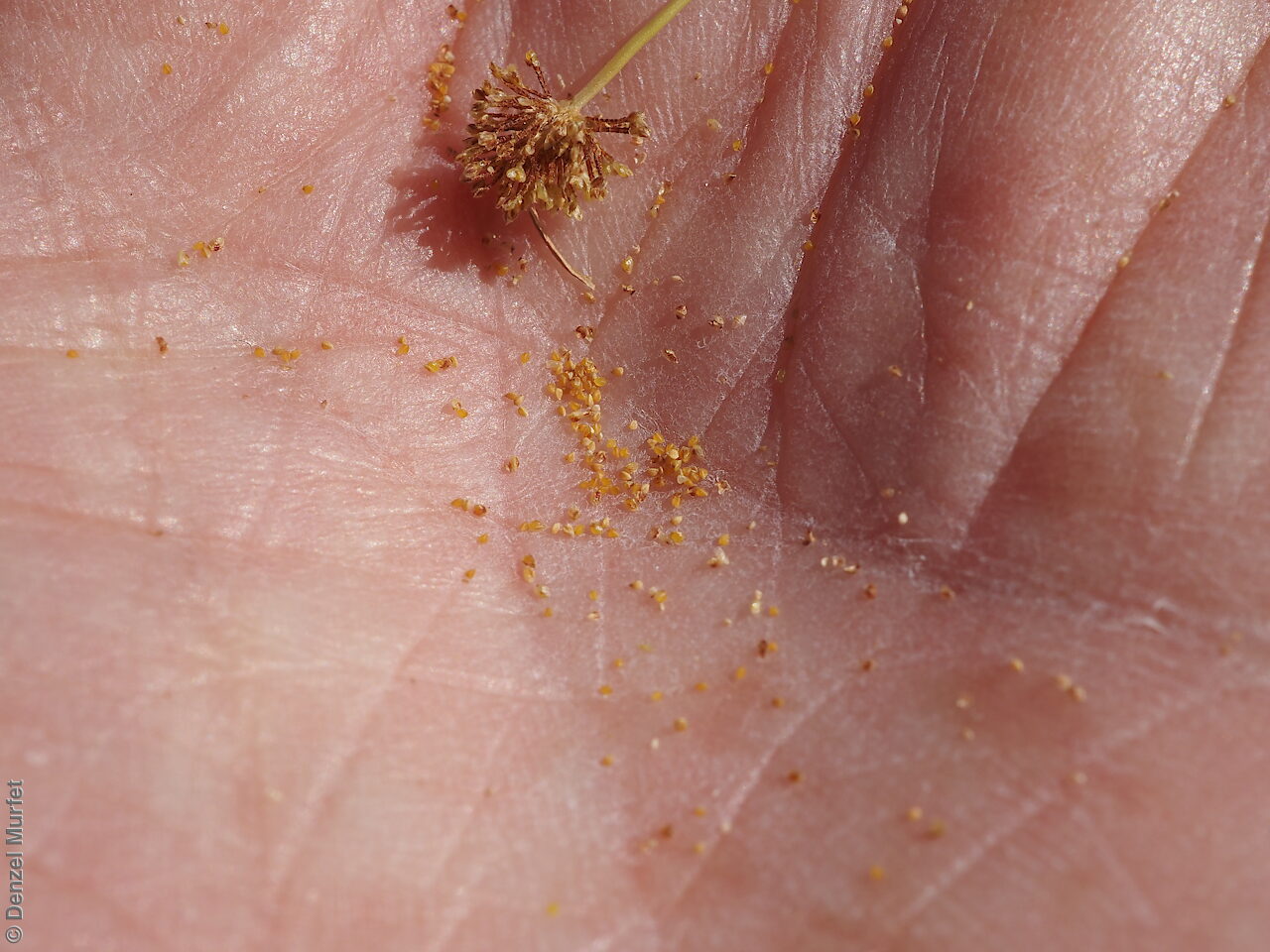
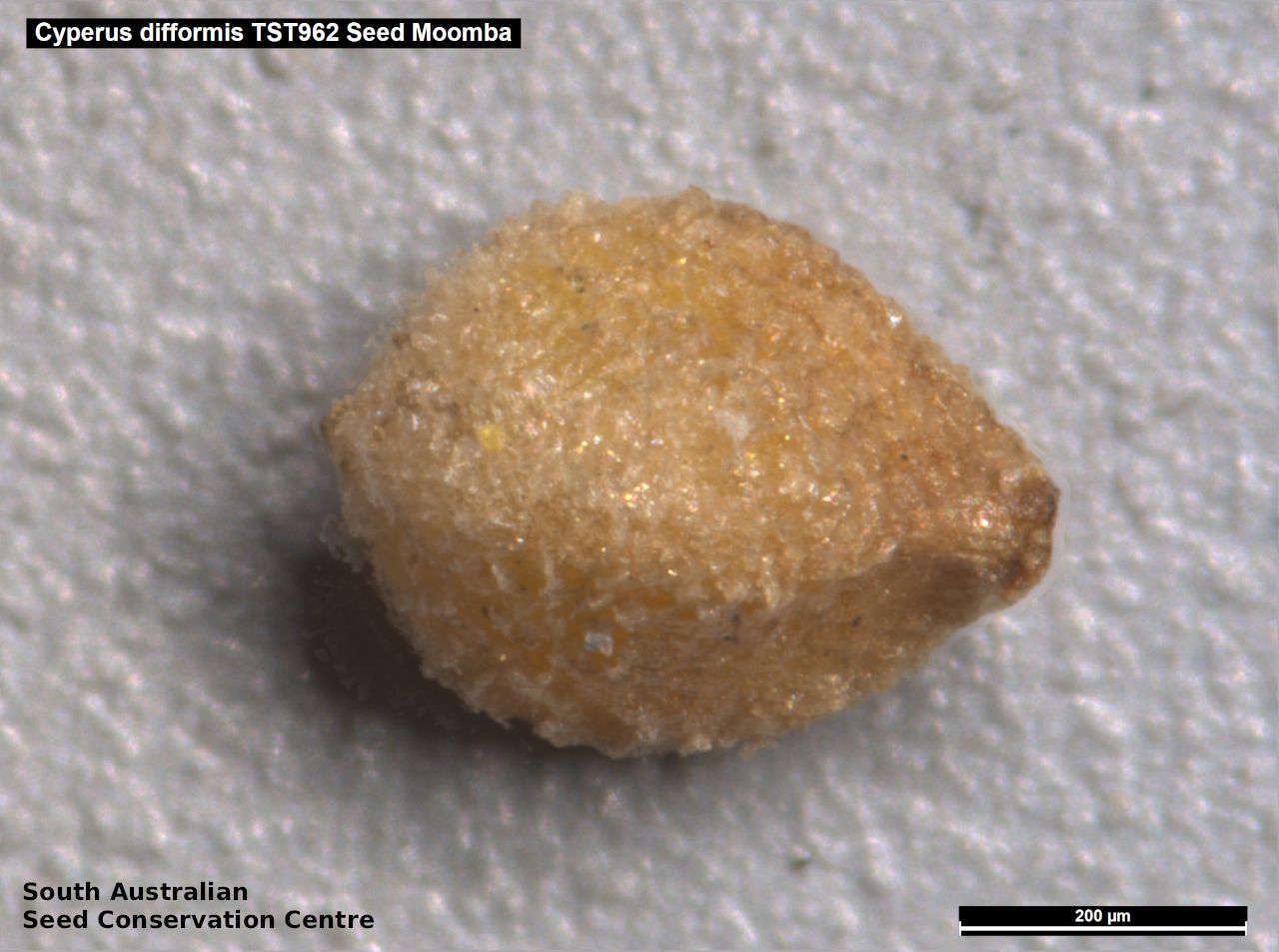
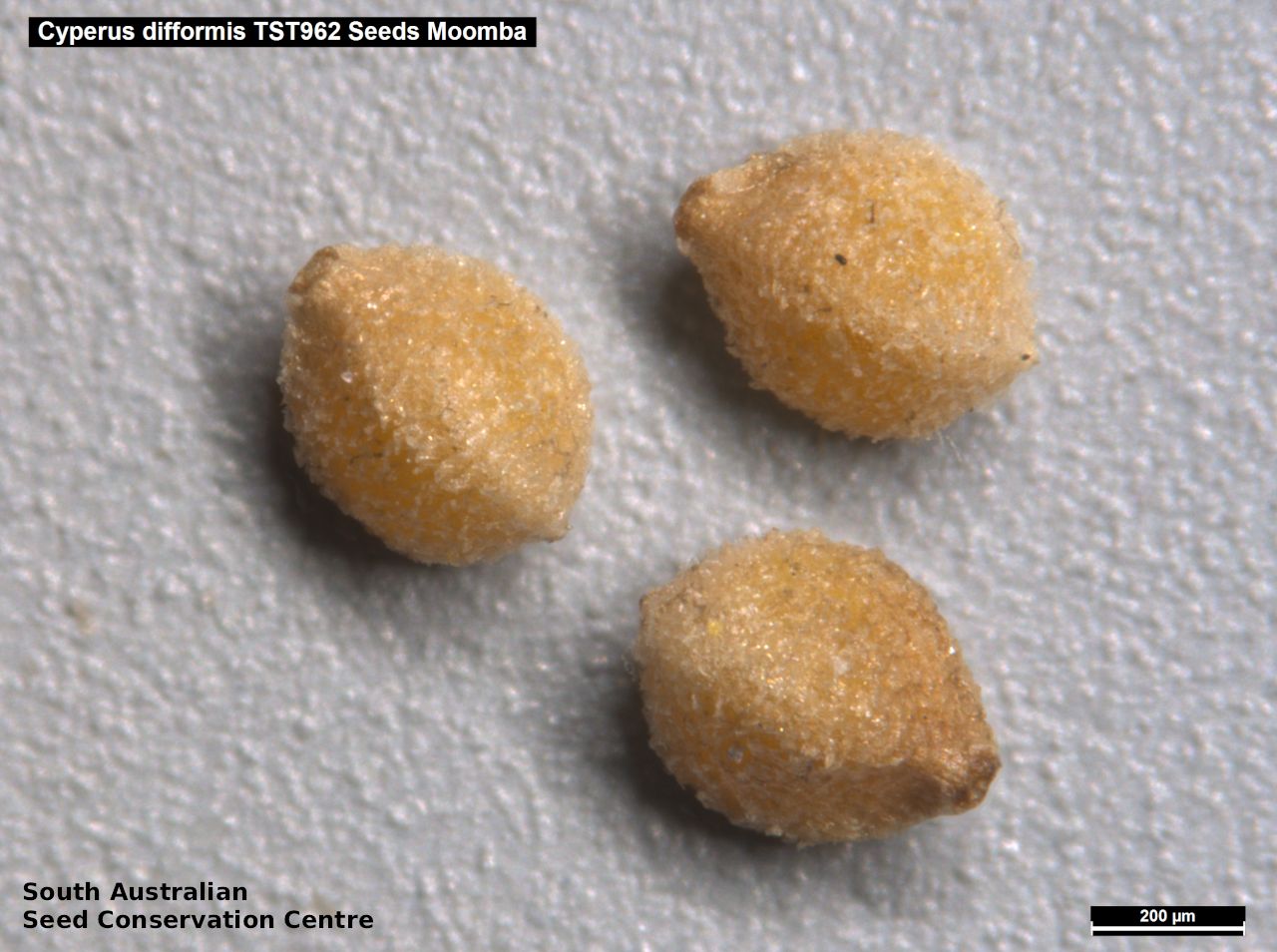

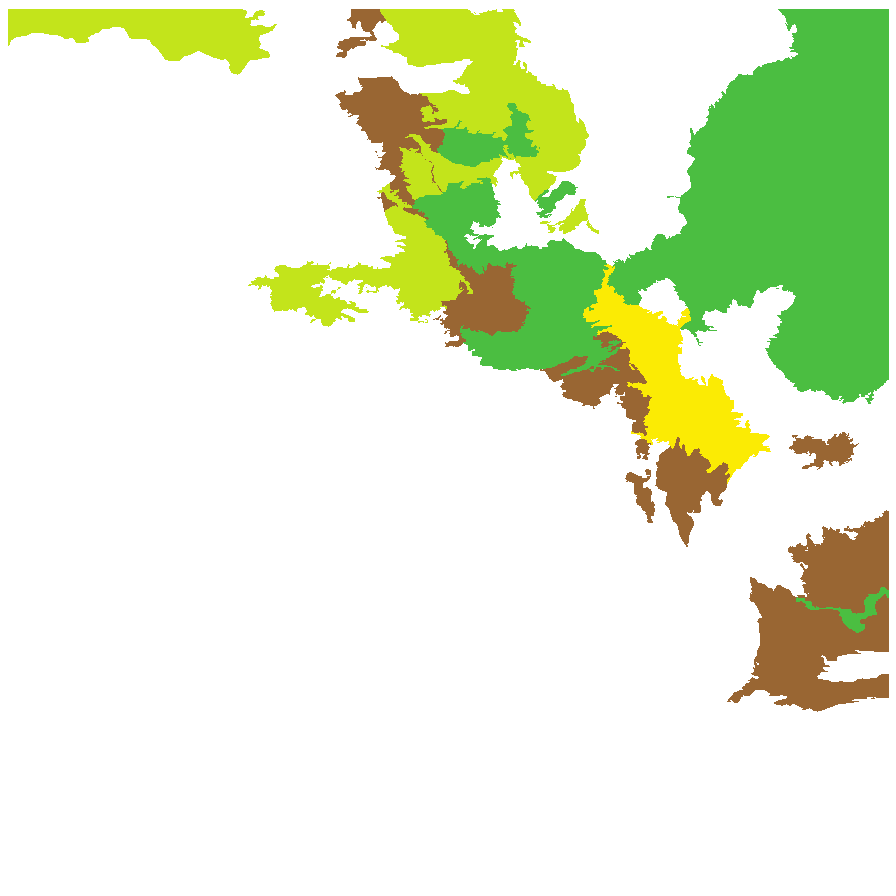
Botanical art
Common names
Variable Flat-sedge
Dirty Dora
Etymology
Cyperus from the Latin 'cyperos' and derived from the Greek 'kypeiros', an ancient Greek name used by Homer and Theophrastus for several plants of this genus. Difformis from the Latin 'difformis', meaning changing shape.
Distribution and status
Found in north-east South Australia and along the Murray river growing in seasonally wet, open situations, often in disturbed sites. Also found in all mainland States. Native. Common in South Australia. Common in the other States.
Herbarium regions: North Western, Lake Eyre, Gairdner-Torrens, Flinders Ranges, Eastern, Murray
NRM regions: Alinytjara Wilurara, Northern and Yorke, South Australian Arid Lands, South Australian Murray-Darling Basin
AVH map: SA distribution map (external link)
Plant description
Tufted annual to 50 cm high. Leaves grass-like, shorter than stems, to 5 mm wide. Inflorescence a simple umbel or reduced to a dense head. Spikelets usually reddish-black, 8-20 flowered, small, linear 4-8mm long, 0.75mm wide. Flowering between January and July. Fruits are flat, red-brown fruit-head in dense clusters. Seeds are pale brown ovoid triangular seed to 0.5 mm long and 0.4 mm wide, with a wrinkled surface. Seed embryo type is capitate.
Seed collection and propagation
Collect seeds between March and September. Collect fruits either by picking off the mature heads, those turning an red-brown colour and come-off easily or pull out the whole plant. Place the heads in a tray and leave to dry for one to two weeks. Then rub the heads with a rubber bung to dislodge the seeds. Use a sieve to separate any unwanted material. Be careful, as the seeds are very small. Seeds are yellowish ovoid and hard. Store the seeds with a desiccant such as dried silica beads or dry rice, in an air tight container in a cool and dry place. From three collections, the seed viability was high, ranging from 95% to 100%.
| Location | No. of seeds (weight grams) | Number of plants | Date collected | Collection number Collection location | Date stored | % Viability | Storage temperature |
|---|---|---|---|---|---|---|---|
| BGA | 8,600 (0.27 g) | 50 | 26-Sep-2007 | DJD870 Lake Eyre | 19-Sep-2008 | 95% | -18°C |
| BGA | 2,500 (0.74 g) | 40 | 11-Mar-2007 | RJB70920 Gairdner-Torrens | 19-Sep-2008 | 100% | -18°C |
| BGA | 13,600 (0.4 g) | 20+ | 12-Aug-2010 | TST962 Lake Eyre | 1-Jan-2012 | 100% | -18°C |
Number of plants: This is the number of plants from which the seeds were collected.
Collection location: The Herbarium of South Australia's region name.
% Viability: Percentage of filled healthy seeds determined by a cut test or x-ray.